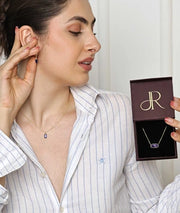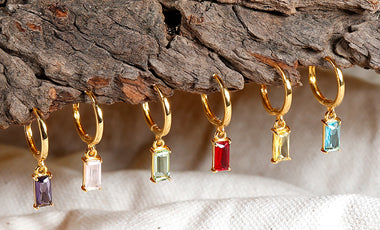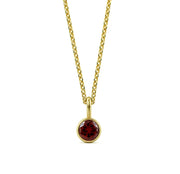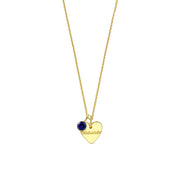Gold-plated jewelry is stylish, affordable, and popular, but sometimes it can leave a greenish tint on your skin. If this has ever happened to you, you may be wondering whether it is normal or if your jewelry is fake or low quality.
In this guide, we will explain why gold-plated jewelry can turn your skin green, whether it is harmful, and how you can protect both your skin and your favorite pieces without giving them up.
Can Gold-Plated Jewelry Turn Your Skin Green?
Yes and Here’s Why
Gold itself is generally non-reactive, but the metals beneath the gold plating can cause reactions. As the thin gold layer wears down over time, it may reveal underlying metals such as copper or brass. When these metals come into contact with sweat, water, or air, they can oxidize, leaving a greenish tint on your skin.
Common Reasons Why Gold-Plated Jewelry Turns Green
1. Exposure to Moisture and Air
Humidity, sweat, and even frequent handwashing can weaken the gold layer. Once the base metal underneath is exposed, it reacts with your body’s moisture, causing oxidation.
2. Body Chemistry
People with higher acidity levels in their sweat are more likely to experience green stains. Your unique skin chemistry can speed up metal corrosion, especially with copper-based items.
3. Low-Quality Base Metals
Jewelry made with cheap base metals often reacts faster. If the plating is thin and the base is highly reactive, your skin might turn green sooner than expected.
4. Friction and Regular Wear
Constant rubbing against your skin or other surfaces can gradually erode the gold layer, exposing the reactive core metal underneath.
Is It Bad for Your Skin?
No, a green tint isn’t a health concern, it's a harmless chemical reaction. However, if you feel itching, burning, or redness, you may be dealing with a nickel allergy, which is a different issue altogether. In such cases, stop wearing the piece immediately.
How to Stop Gold-Plated Jewelry from Turning Green
Worried about your gold-plated jewelry leaving green stains or fading too soon? With the right habits, you can keep it looking shiny and new for longer.
1. Keep It Away From Water
Remove your jewelry before showering, swimming, or washing hands. Water speeds up the breakdown of the gold coating and triggers metal reactions.
2. Don’t Wear It During Workouts
Sweat and body heat create the perfect environment for oxidation. Take off your jewelry before hitting the gym or going for a run.
3. Apply Products Before Wearing Jewelry
Lotions, perfumes, and sprays contain chemicals that can strip off the gold layer. Let them dry on your skin first, then wear your accessories.
4. Use a Barrier
Coating the inside of rings or bracelets with clear nail polish can act as a barrier between your skin and the metal. Reapply the coating every few wears.
5. Store With Care
Keep your gold-plated jewelry in a dry, cool place. Store each item in a soft pouch or zip-lock bag to prevent scratching and tarnishing.
Explore More: Why Jewelry Turns Skin Green & How to Stop It
How Long Does Gold-Plated Jewelry Last Before Turning Green?
If cared for properly, gold-plated pieces can last from 6 months to 2 years before showing signs of wear. Cheaper items with thin plating may fade faster, while high-quality plated pieces with better craftsmanship and thicker coatings tend to last longer.
How to Clean Gold-Plated Jewelry Without Damaging It
-
Use a soft, lint-free cloth to wipe the surface gently.
-
Mix mild dish soap with warm water and dip a cloth into it and never soak the jewelry.
-
Pat dry immediately and avoid using brushes, alcohol, or chemical cleaners.
Gold-Plated vs. Other Gold Alternatives
Gold-Plated vs. Gold-Filled
Gold-filled jewelry has a much thicker gold layer and is less likely to turn green. It’s ideal for those with sensitive skin or for everyday wear.
Gold-Plated vs. Vermeil
Vermeil is made with a sterling silver base and thick gold coating. It’s a better hypoallergenic option and lasts longer without discoloration.
Best Occasions to Wear Gold-Plated Jewelry
-
Special events or weddings
-
Photo shoots or social media content
-
Outings with minimal physical activity
-
Gift-giving occasions
For daily wear, opt for solid gold, gold-filled, or vermeil.
Know More: The Truth About Gold-Plated Jewelry: Value, Style & Care






